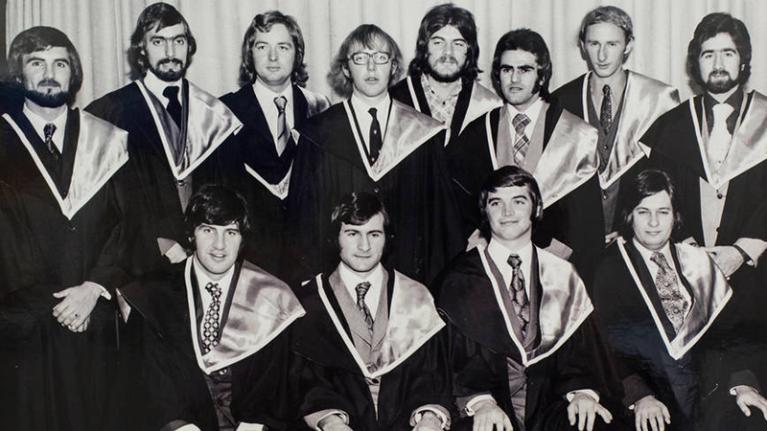Graduation day: decoding the colours & cloaks of academic celebration
Graduation day. The culmination of years of hard work. Dressed in cap and gown, walking up on stage to collect your degree. The thought might’ve helped you through the trials of late-night study, group assignments, and pre-exam jitters.
And, if you've graduated from VU this year, the real experience is still a vivid memory.
The cloak, cap, and traditions that are synonymous with graduations are seen in these ceremonies right around the world.
But what do they signify and why did they come about? We take a look at the origins of these enduring traditions.

Graduation traditions from around the world
Robes of the Middle Ages
The first European universities were founded by clergy in the 12th and 13th centuries. The clergy introduced robes to delineate religious scholars from the non-religious population of a university city, separating the “town and gown”. The robes were also introduced for a practical reason: to keep students warm in unheated buildings.
Oxford and Cambridge were the first to standardise gowns during graduation. In 1222, the Archbishop of Canterbury declared that students wear robes, then known as the “cappa clausa”.
Over the centuries, conventions evolved and robes are now worn at universities around the world, not as everyday dress, but to signify academic achievement. At VU, undergrad and postgrad graduands wear a black gown in the Oxford style, while doctoral candidates wear a red gown. There are different styles of gowns for undergraduate and higher degrees, with the hood or stole indicating the discipline of the award.

Mortarboards, the square ‘cap’ of graduation
Mortarboards, the square caps that are universal at graduations the world over, are said to have developed from a hat called a “biretta” worn by the Roman Catholic clergy. They became popular in the 14th and 15th centuries.
The term "mortarboard" came into usage in the mid-1800s, which is said to be because of similarity to the hawk tool used by tradespeople to hold mortar or plaster. The mortarboard was originally worn only by students who had completed a master’s degree, but now it is worn by a much wider breadth of students including VE/TAFE, undergraduate and masters graduands. The tassel is always worn on the front left temple.

Cracking the colour code
Ruby. Ultramarine. Parchment. Pansy. Sapphire. Buff. As vibrant and varied as a tin of Derwent pencils; each colour corresponds to a specific academic discipline, worn over the gown at graduation, in a hood or stole, to indicate the faculty of the award.
Centuries after robes first became a staple of academic wardrobes, the University of London introduced the first colour code system for academic disciplines in the UK in 1844. This innovation was adopted by other UK universities; and then by universities in the US, with an Intercollegiate Commission coming together in 1895 to create a code of academic dress and the colours to be worn for each discipline.
The use of colour is more flexible in Australian universities, with each devising its own colour code system.
Check out the VU colour code.

Recognising the age-old ceremonies of the Kulin & Eora peoples
The land on which our campuses stand is the place of age-old ceremonies of celebration, initiation, and renewal. The Kulin and Eora peoples’ living culture had, and has, a unique role in the life of these regions. To recognise this at our graduations, Aboriginal and Torres Strait Islander students have the option of wearing a calf-length black and red silk Indigenous stole together with the academic dress of their award. The stole has gold tassels and gold silk embroideries, including the words “Ngaga Jindi Woraback”, which, in Woiwurrung language, means ‘join and unite'.
Recently graduated? Check out the benefits & career support for you
If you're a recent - or soon-to-be - graduate, keep in touch and check out the benefits from VU's Alumni Association.
VU's Learning Hub online offers recent graduates and current students career advice and academic support. You'll gain access to the online jobs board, career resources, virtual interview practice, drop-in sessions, workshops and mentoring.
And discover how you can make your graduate resume stand out from the crowd.